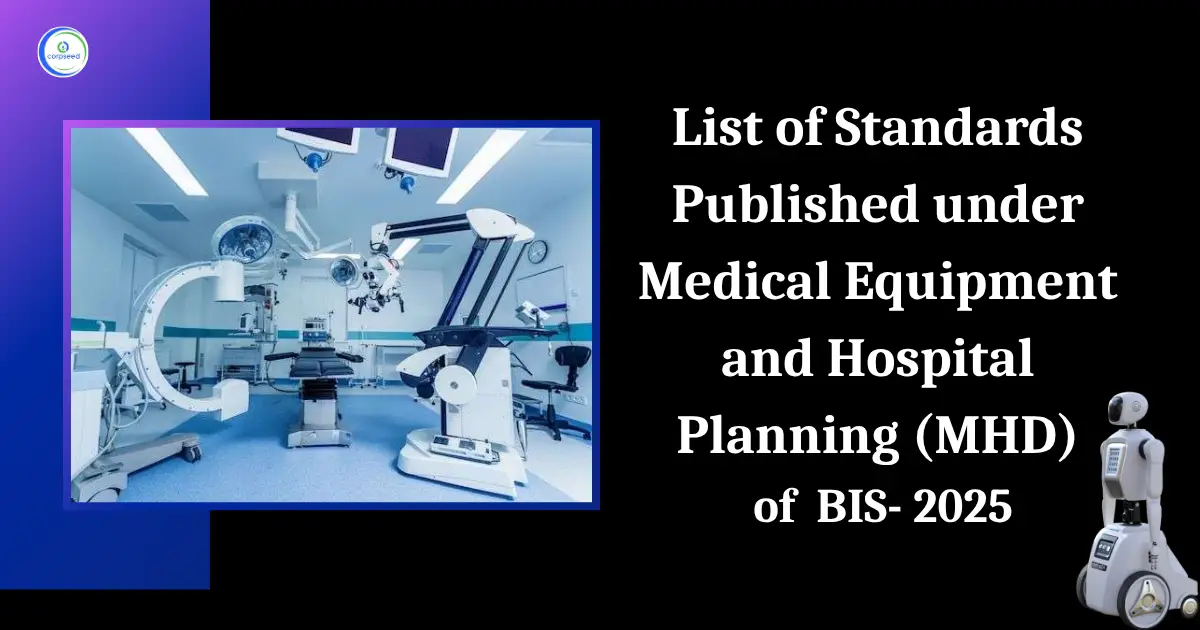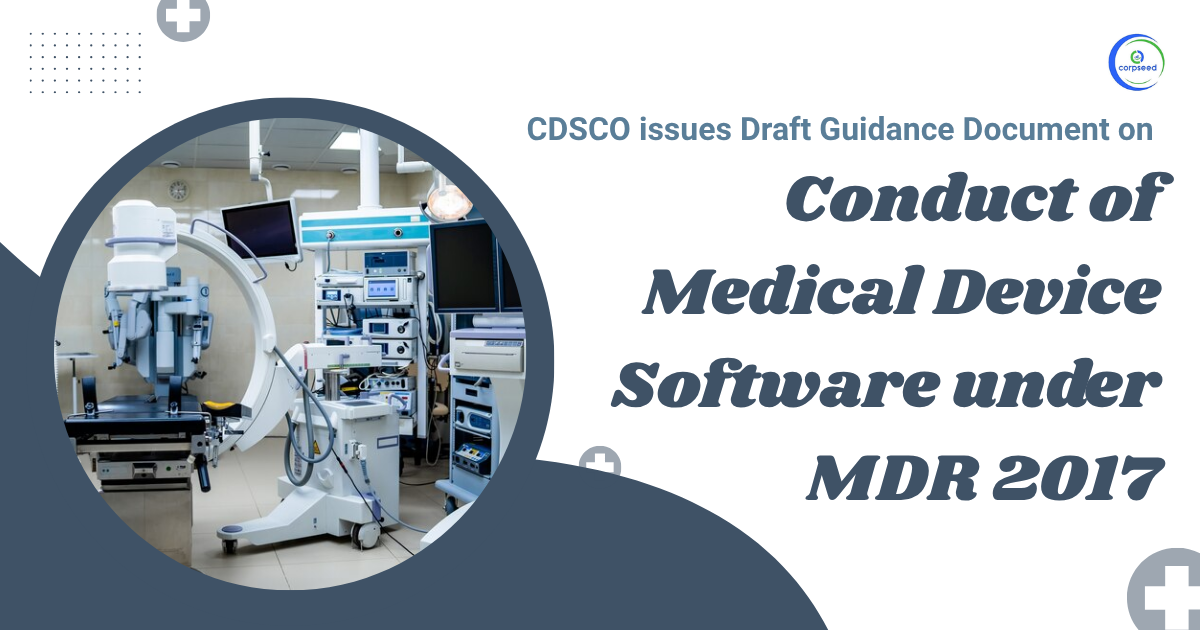Medical technology and hospital infrastructure significantly shape the way modern healthcare operates today. To ensure the safety, reliability, and quality of medical devices, the Bureau of Indian Standards (BIS) established the Medical Equipment and Hospital Planning Division (MHD).
Table of Contents
This division creates and updates national standards for every type of hospital equipment and medical system. In 2025, BIS strengthened these standards to match global norms and new technologies. Hospitals and manufacturers seeking BIS registration for medical devices must now follow these updated MHD standards to ensure safety, quality, and compliance across India.
Understanding the MHD Division of BIS
The Medical Equipment and Hospital Planning Division (MHD) of BIS is accountable for standardization across an extensive range of medical devices, hospital equipment, and allied areas. It covers a wide range from a simple surgical device to complex electromedical instruments and digital health informatics.
The MHD division of BIS develops Indian Standards (IS) that define technical needs, materials, performance parameters, safety features, and quality standards. For manufacturers, seeking BIS registration under the relevant MHD standards must adhere to the updated MHD regulations to ensure their devices comply with recognized safety and quality standards.
Additionally, the MHD division operates through multiple technical committees, each dedicated to specific medical fields. This ensures specialized attention to every category, making the standards both practical and comprehensive.
Key Technical Committees under MHD
The Medical Equipment and Hospital Planning Division (MHD) works through specialized committees that concentrate on various categories of medical and hospital technologies. Each committee consists of experts from medical, engineering, and scientific backgrounds who create and review standards to ensure they stay pertinent to contemporary healthcare requirements.
- MHD 01- Surgical Instruments
- MHD 02- Orthopaedic Instruments, Implants and Accessories
- MHD 03- Obstetric and Gynaecological Instruments
- MHD 04- Ear, Nose and Throat Instruments
- MHD 05- Ophthalmic Instruments and Appliances
- MHD 06- Thoracic and Cardiovascular Surgery Instruments
- MHD 07- Neurosurgery Instruments and Implants
- MHD 08- Dentistry and Dental Materials
- MHD 10- Medical Laboratory Instruments
- MHD 11- Anaesthetic, Resuscitation and Allied Equipment
- MHD 12- Hospital Equipment
- MHD 13- Veterinary Hospital Planning and Instruments
- MHD 14- Hospital Planning
- MHD 15- Electromedical Equipment
- MHD 17- Health Informatics
- MHD 19- Immuno-biological Diagnostic Kits
--------------Blog Contact Form-------------
Key Highlights of BIS MHD Standards (2025)
BIS has published and revised an extensive range of standards under the MHD division to demonstrate the increasing complexity of healthcare technologies and hospital systems. Some of the key highlights are:
- More than 1000 published standards across all categories of medical equipment and hospital systems.
- Emphasis on patient safety through meticulous testing, quality assurance, and risk assessment protocols.
- Integration with global standards to align Indian products with ISO and IEC benchmarks.
- Introduction of digital healthcare standards under Health Informatics (MHD 17).
- Promotion of “Make in India” by assisting local manufacturers in achieving global quality certifications.
- Guidelines for hospital planning that ensure efficient layouts, infection control and optimal patient care environments.
- An updated list for 2025 that includes newly developed technologies, such as remote monitoring devices, diagnostic software, and advanced biomedical systems.
The Importance of MHD Standards
The BIS MHD standards form the foundation of medical device regulation and healthcare facility design in India. Their significance covers safety, quality, compliance, and innovation.
- Safety for Patients and Healthcare Professionals: MHD standards outline design, sterilization, and usage guidelines for medical tools and equipment to reduce the chances of risks. By following these standards, hospitals and manufacturers ensure that devices are safe, biocompatible, and defect-free.
- Consistent Quality and Performance: The standards provide uniform design and testing protocols. This guarantees that devices like infusion pumps or implants operate reliably, irrespective of their manufacturer, fostering trust in the medical field.
- Regulatory and Legal Compliance: Compliance with BIS standards under India’s Medical Devices Rules, 2017 streamlines the process for licensing and approvals. Complying with these standards also helps prevent regulatory complications by demonstrating conformity with recognized safety standards.
- Enhancing Hospital Infrastructure and Management: Hospital planning standards (MHD 14) guide the design of secure and efficient healthcare facilities. They contain areas such as air quality, fire safety, and infection control, leading to enhanced patient outcomes and operational efficiency.
- Supporting Innovation and Research: MHD standards promote innovation by establishing clear minimum safety criteria. Start-ups and manufacturers can develop advanced products such as smart diagnostic systems while ensuring compliance with established safety regulations.
Examples of Key Standards under MHD
The MHD standards cover a wide range of domains that touch every corner of healthcare, from operating rooms to data systems.
- Surgical Instruments (MHD 01): Standards specify the requirements for scalpels, forceps, and surgical scissors. They define design, finish, and sterilization compatibility to ensure safety during operations.
- Orthopaedic Implants (MHD 02): These include standards for bone screws, plates, and prosthetic devices. They focus on biocompatibility and mechanical performance to prevent failure after implantation.
- Anaesthetic and Resuscitation Equipment (MHD 11): This covers ventilators, anaesthesia systems, and resuscitation devices. Standards ensure reliability, precision, and patient safety during critical care.
- Hospital Equipment (MHD 12): Includes hospital furniture, operating tables, and sterilizers. They define hygiene, durability, and usability benchmarks for patient care facilities.
- Hospital Planning (MHD 14): These standards define guidelines for outpatient departments, emergency services, and inpatient facilities. They help in creating functional hospital layouts that promote hygiene and patient safety.
- Electromedical Equipment (MHD 15): This category covers devices like ECG machines, monitors, and defibrillators. The standards ensure electrical safety, precision, and electromagnetic compatibility.
- Health Informatics (MHD 17): With healthcare becoming more digital, this category sets norms for data management, patient information systems, and interoperability between hospital software.
- Immuno-biological Diagnostic Kits (MHD 19): Defines quality and accuracy parameters for diagnostic test kits and immunological devices, ensuring reliability in medical testing and public health applications.
Standardization in New and Emerging Medical Fields (2025 Focus)
BIS is continuously expanding its reach into newer areas of healthcare. The year 2025 marks several new directions for standardization under the MHD division.
- Digital Health and Telemedicine: New standards are being introduced to ensure the safety and interoperability of telemedicine platforms, wearable health trackers, and digital diagnostic tools. They focus on safeguarding the medical data of patients and maintaining accuracy in remote health monitoring.
- Artificial Intelligence in Healthcare: AI-driven diagnostics, prognostic analytics, and robotic surgeries are being standardized for accuracy, transparency, and ethical use. These standards will help ensure AI systems are used in clinical decision-making.
- Cybersecurity in Medical Devices: With high use of connected medical devices, BIS is developing frameworks for cybersecurity and data safety. This guarantees that medical systems are safe from illegal access or manipulation.
- Advanced Biomedical Waste Management: Updated hospital planning norms involve waste segregation, disposal, and treatment methods. These encourage environmental safety and sustainability.
- Nanotechnology and Biotech Devices: Future standards will cover nanomaterials used in implants and diagnostic kits. They will define safety standards for advanced biological and chemical testing.
The Broader Impact of MHD Standards
The impact of these standards extends far beyond equipment manufacturing. They influence every part of the healthcare value chain, from production to patient care. Hospitals built under BIS guidelines perform better in safety audits, device recalls reduce drastically, and medical exports from India gain higher credibility worldwide.
Moreover, these standards build public confidence in India’s healthcare infrastructure. When every device, implant, and system conforms to Indian Standards, it creates an environment of safety, trust, and long-term sustainability.
Conclusion
The Medical Equipment and Hospital Planning (MHD) standards under BIS are now a cornerstone of India’s healthcare quality framework. They keep medical devices safe, hospitals efficient, and patient care consistent across the country.
Healthcare is changing fast with new tools like AI-based diagnostics, remote care platforms, and smart medical systems. The MHD division is keeping pace by expanding and updating its standards to cover these new technologies. By following them, India is not only protecting patient safety but also building a reputation as a global center for trustworthy, high-quality medical manufacturing.
This portion of the site is for informational purposes only. The content is not legal advice. The statements and opinions are the expression of author, not corpseed, and have not been evaluated by corpseed for accuracy, completeness, or changes in the law.
BOOK A FREE CONSULTATION
Get help from an experienced legal adviser. Schedule your consultation at a time that works for you and it's absolutely FREE.









